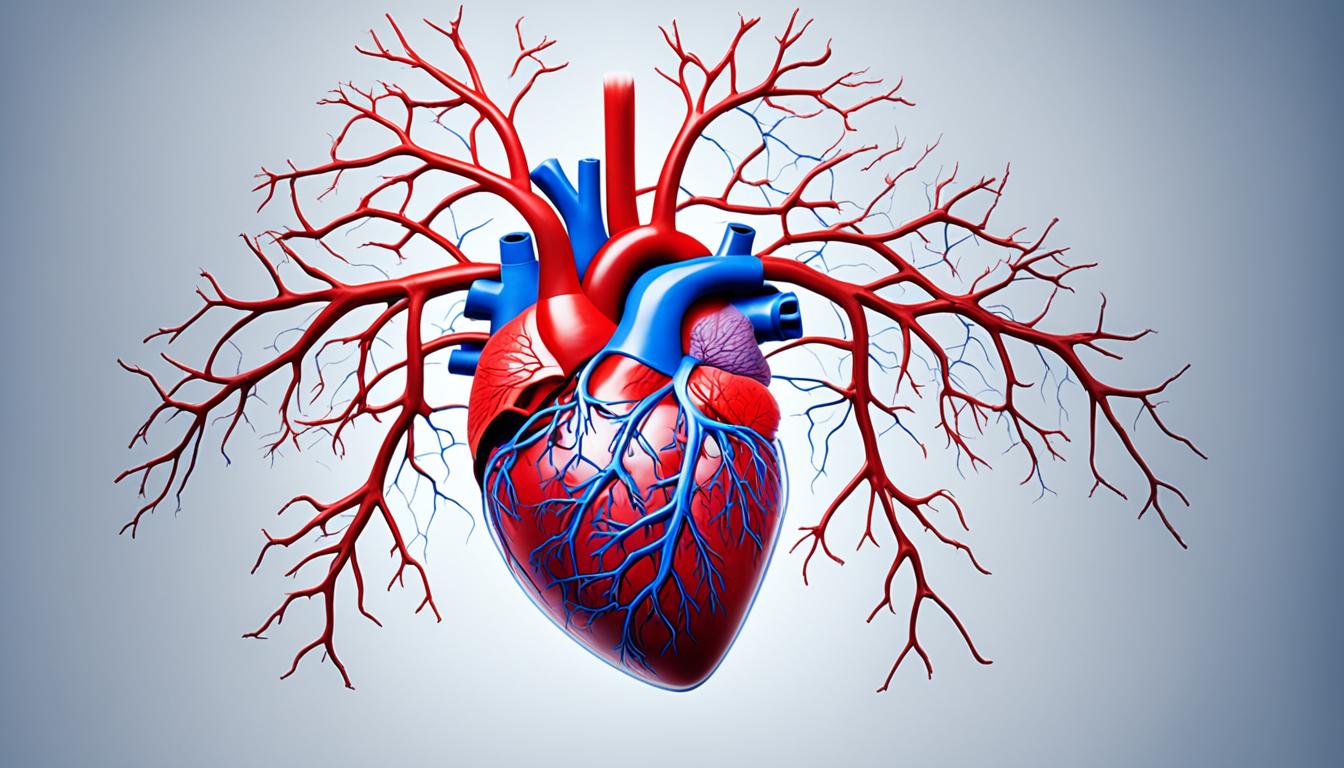Partial anomalous pulmonary venous return (PAPVR) is a heart problem from birth. It stops certain pulmonary veins from linking right in the left atrium. Instead, these veins connect to the wrong places, mixing good and bad blood.
This mix of blood leads to short breath, feeling tired, and skin that looks blue.
To find PAPVR, doctors use special heart pictures like echocardiography and MRI. They show how the veins are connected and how bad the problem is.
Taking action against PAPVR often means heart surgery. The goal is to fix where the veins connect. This improves how well oxygen gets around the body.
Thanks to better surgery skills, fixing PAPVR has become more successful.
There’s hope in a new area for the heart called stem cell therapy. It’s exciting because stem cells can turn into heart cells. Scientists believe they can use this to fix the heart’s problems.
Key Takeaways:
- PAPVR is a congenital heart defect where one or more pulmonary veins do not connect properly to the left atrium.
- It results in the mixing of oxygen-rich and oxygen-poor blood, leading to symptoms such as shortness of breath and fatigue.
- Diagnosis of PAPVR involves advanced imaging tests like echocardiography and cardiac MRI.
- Surgical repair is the primary treatment option for PAPVR, redirecting the pulmonary veins to their correct location.
- Stem cell therapy shows promising potential for regenerative treatments in the field of cardiology, including PAPVR.
Anomalous Pulmonary Venous Return: Types, Risk Factors, and Complications.
Anomalous pulmonary venous return is when the connection between pulmonary veins and the heart is wrong. Types include partial and total anomalous pulmonary venous return.
Partial just means some veins go to the wrong place in the heart. Total is when all veins connect to a spot they shouldn’t.
Many things can lead to this condition. Some genetic factors can make it more likely to happen. Things like teratogens during pregnancy or certain health problems in the mom raise the risk too.
Having these issues can make the heart work too hard or cause problems with its rhythm. It can also lead to high blood pressure in the lungs.
It’s vital to find and treat this condition early. Tests like echocardiography and MRIs can help doctors know what to do. Surgery is often needed to fix where the veins connect.
Those diagnosed should get regular medical care. Today, medicine and surgery are improving, offering better hope for those with this condition.
Treatment Options for PAPVR and Advances in Stem Cell Therapy.
The main way to treat PAPVR is through surgery. This process moves the veins to their proper spot in the left atrium. Doctors use many methods like creating a defect in the atrium. Then, they use a patch to create a new link for the veins. These advancements have made PAPVR surgeries much more successful.
Stem cell therapy is becoming a new hope for congenital heart problems like PAPVR. Stem cells can turn into various cell types, such as heart cells. This ability brings great promise for fixing heart tissues in PAPVR patients.
Scientists are actively studying stem cell therapy’s use for PAPVR and other heart issues. They’re doing research and tests to check the method’s safety and success. The early findings are positive. If it works well, this new method could change how we treat PAPVR and enhance the results for patients.

